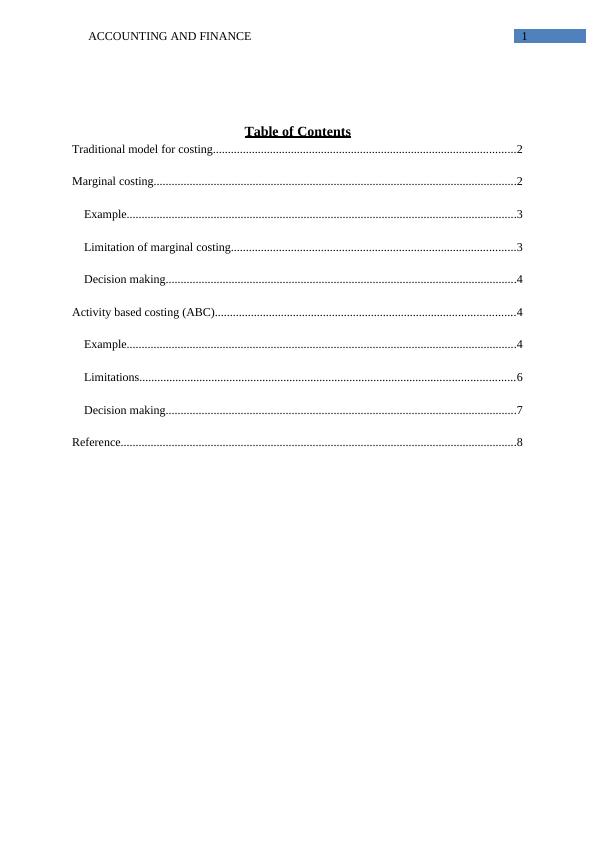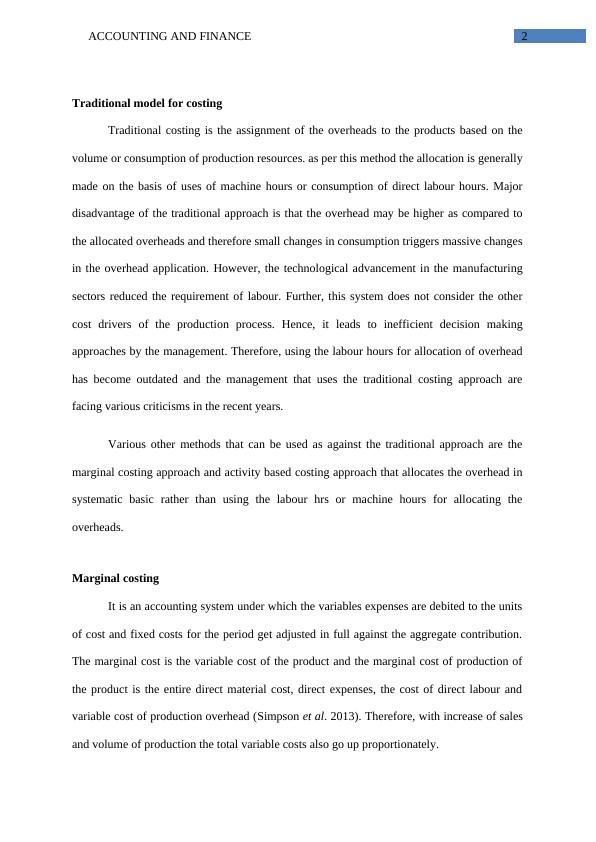Accounting and Finance: Traditional Model, Marginal Costing, and Activity Based Costing
Explain how to calculate the cost of an individual product, service or activity using relevant examples, discuss areas where judgement was required or limitations in the methodology, and comment on the usability of the calculations for decision making purposes.
9 Pages1634 Words390 Views
Added on 2023-06-15
About This Document
This article discusses the traditional model for costing, marginal costing, and activity based costing in accounting and finance. It explains their limitations and decision making approaches with examples. The article also includes a table of contents, subject, and references.
Accounting and Finance: Traditional Model, Marginal Costing, and Activity Based Costing
Explain how to calculate the cost of an individual product, service or activity using relevant examples, discuss areas where judgement was required or limitations in the methodology, and comment on the usability of the calculations for decision making purposes.
Added on 2023-06-15
ShareRelated Documents
End of preview
Want to access all the pages? Upload your documents or become a member.
Accounting and Finance: Traditional Costing vs Absorption Costing vs Activity Based Costing
|11
|2346
|219
Cost Accounting Systems: Marginal Costing, Traditional Costing, and Activity Based Costing
|6
|1384
|51
Traditional and Activity Based Costing: A Comparative Analysis
|8
|1898
|97
ACC200 Assignment on Overhead Costing and Activity Based Costing
|13
|3018
|85
Management Accounting: Overhead Allocation and Cost Computation
|12
|2903
|500
MANAGEMENT ACCOUNTING Contents Solution 1: Statement of Cost
|12
|1936
|84



